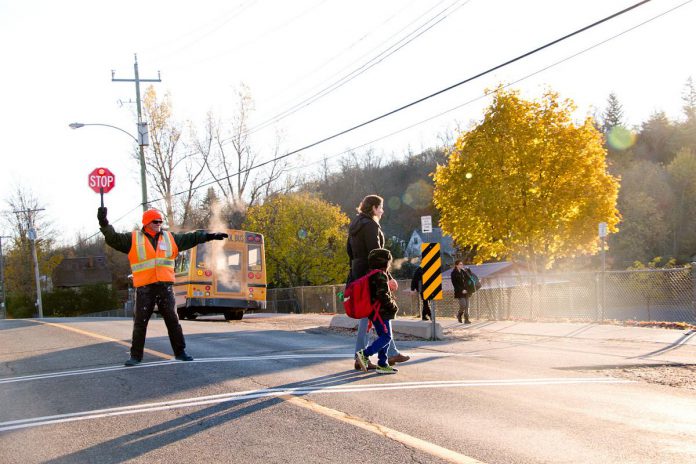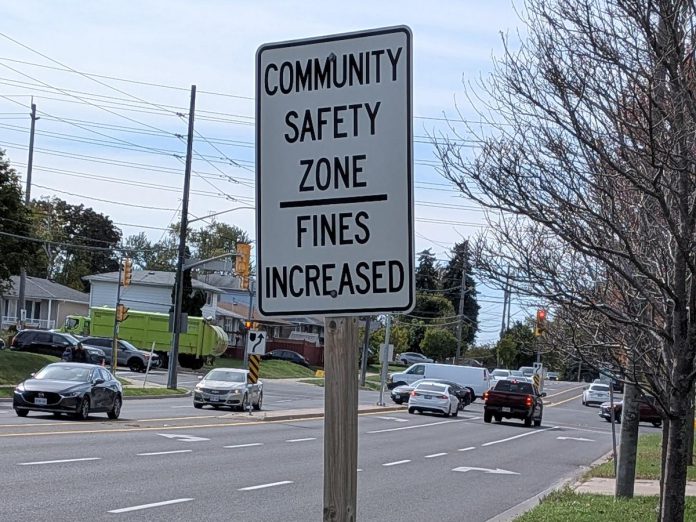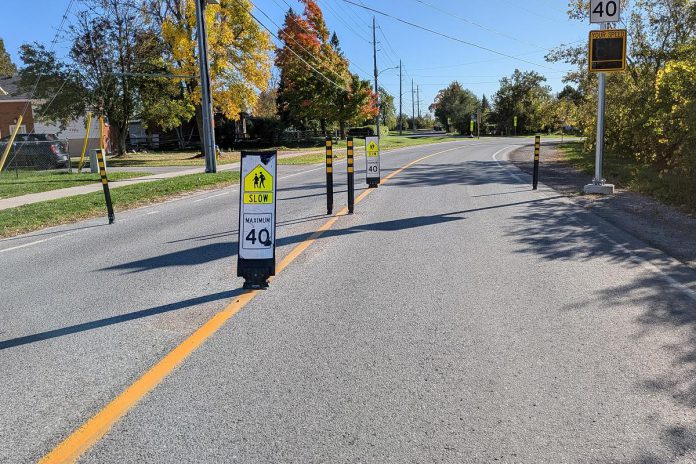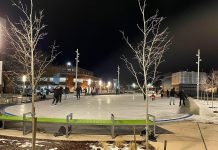
October is “Walktober,” a month to celebrate the joys and simple pleasures of walking to school. To mark the occasion, Active School Travel Peterborough is highlighting how far the city has already come on the journey toward safer routes for kids and families to walk and roll to school, and looking ahead to what’s next.
In 2023, Peterborough city council approved a city-wide speed reduction in school zones, the implementation of community safety zones for 30 elementary and high schools, and enhanced traffic safety treatments for five schools — one in each ward — to pilot additional measures. At the time, some councillors expressed concern about lowering speed limits around schools centred on enforcement. Would motorists yield to new signs or treatments?
Two years later, city reports show that these measures and speed limit reductions have in fact reduced vehicle speeds by 6.5 km/h, but the average speed in 40 km/h zones remains 11.5 km/h over the limit.
To support the Peterborough Police Service and ensure key locations see a reduction in overall traffic speed, in May of this year the City of Peterborough approved four automated speed enforcement (ASE) cameras for a two-year pilot. The Peterborough Police Service expressed support for the use of ASE in the city, as resources are limited for continuous police presence in these areas.
Other communities in Ontario have documented success with similar programs. In Ottawa, prior to installing ASE in 2020, speed limit compliance in targeted zones was at only 16 per cent.
Within three months, compliance jumped to 57 per cent, and up to 81 per cent three years later. Even more compelling, excessive speeding (over the 85th percentile) in Ottawa has dropped to 0.4 per cent from 14 within that same time period.
These are results worth celebrating, as lower speeds increase safety by reducing collision severity and stopping distance. Statistically, only 50 per cent of people struck by a vehicle going 50 km/h will survive their injuries, while 90 per cent will survive being struck at 30 km/h. That 20 km/h can make a big difference in terms of survivability, and should be understood by all motorists.

Speeding also impacts a driver’s ability to perceive hazards and account for unexpected events. In a school zone, drivers are more likely to encounter children running onto the street, cyclists swerving to avoid parked cars, or a range of other unexpected events. When such an event occurs, visibility is crucial, but another key factor is stopping distance.
The faster a motorist is travelling, the more distance they require to identify a hazard and then stop safely. Stopping distance for vehicles travelling at 30 km/h is approximately 35 metres (8 car lengths), versus 65 metres at 50 km/h (14 car lengths).
If the above statistics are widely known, and the public realizes how dangerous speeding is, one question remains: Why is it hard for many drivers to consistently slow down in these areas?
One answer may be by design.
In the City of Peterborough, many schools are located on arterial roads, classified to carry high volumes of urban traffic, with limited access points and (often) higher speed limits, essentially engineered to have maximum movement of vehicles. Arterial roads have subtle elements that make speeding feel “comfortable” to the average motorist, such as long sight lines, wider lanes, and gentle curves.
These speed-friendly features can be improved upon by adding road treatments that mitigate driver “comfort,” such as bollards, transverse rumble strips, or enhanced road signs — but these are only a few tools in the box when it comes to crafting safer school zones for everyone.

As Peterborough marks Walktober, it’s a good time to reflect on the progress made in making school zones safer, and to recognize the work still to come.
Whether walking, biking, rolling, or driving near a school, remember: every choice to slow down makes a difference. Slower streets save lives, reduce stress and help build healthier, more connected communities. Communities where children and families feel safe and confident on their daily journey to school.
For more about Active School Travel Peterborough, including resources and events, visit greenup.on.ca/active-school-travel-peterborough.



























